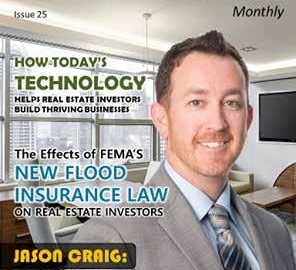If you already have a million dollars set aside for your retirement years – a figure most experts recommend as a goal – you’re not the norm.
According to 2013 data from the Economic Policy Institute (EPI), individuals living on the cusp of retirement age (in their 50s and 60s) are well behind $1 million in savings. As of five years ago, soon to be retirees are coming in at $124,831 and $163,577 respectively.
A retirement savings crisis
More recently, an annual survey conducted by insurer Northwestern Mutual, found that one in three Americans has less than $5,000 set aside for retirement!
And while the data in Northwestern’s report is impacted by other age groups, the fact is that many Americans are well behind the one million dollar goal for their retirement portfolios.
In fact, a 2017 report from the Government Accountability Office (GAO) discovered that “about half of households age 55 and older have no retirement savings – and up to two-thirds of workers may not have saved enough to maintain their standard of living in retirement.”
Whether or not you’re behind in your retirement savings goals, as a savvy investor, you know why it’s smart to always be on the lookout for a great opportunity to grow your portfolio.
A self-directed IRA (SDIRA) is one such opportunity. And while it’s an investment tool that’s been around a while – since the 70s, actually – the truth is that it’s often “hidden” in plain sight.
Why?
Because banks and brokerage firms are, by and large, the custodians who offer traditional IRAs, which invest in stocks, bonds, mutual funds, etc.
Alternative investments, then, aren’t on their radar so of course, they’re not going to advertise SDIRAs.
Investment choices

While there are many things you can choose to invest in, the following investment choices are among the most common.:
Stock market
Many individuals – perhaps even you – have made a lot of money on the stock market. But not everyone wants to invest in stocks, bonds, futures, commodities, etc.
Fortunately, for these individuals, there are always alternative investment options such as property investing.
Real estate investing
As you know, investing in real estate can be a very satisfying way to build wealth. It’s easy to understand and much of it is entirely within your control.
But, even if you choose to diversify your real estate holdings among a variety of real estate types; commercial, residential, multi-tenant, etc., at the end of the day you’re still investing in one asset class.
Pensions, 401k
Most employers offer some type of retirement funding option…and if it suits your retirement strategy these can be useful ways to build your nest egg.
However, you’re limited on how much you can contribute and you’re not in full control of the investments your plan makes.
Traditional and Roth IRAs, Self-Directed IRAs
With a self-directed IRA, you are in complete control of the investments you choose. In fact, one of the best things about a self-directed IRA is that you can invest according to what you know and like.
Wine connoisseur? Great! Your SDIRA can invest in a winery.
Want to lend money to a family member?
You may be able to do that (assuming they’re not a disqualified individual)
And then, of course, there’s real estate.

Following are just some of the types of real estate an IRA can invest in:
- Raw land
- Rental income properties
- Manufactured homes
- Public storage units
Trust deeds
- Secured notes
- Parking lots, etc.
- Timber rights
- Mineral rights
- Tree farms
Bottom line, with an SDIRA you have TOTAL CONTROL over your investment choices.
A quick overview of prohibited and acceptable transactions and parties when using a self-directed IRA:
- You can’t buy from yourself or another prohibited person. (think “up and down” your family tree; parents, kids, spouses)
- You can, however, go “left to right”, so siblings, uncles, aunts, cousins, etc. are not disqualified parties.
- You can’t use your IRA as collateral for a personal loan.
- Co-mingling is prohibited (e.g. if your IRA is the owner of record and you start paying for the roof leak, etc. with taxable dollars, the IRS considers it to be commingling your taxable money with your qualified money)
- As you’re probably aware, expenses and cash flows would have to go through the IRA. Because it’s the owner, all the rent and income flow back into the IRA.
- Obviously then, the same thing would apply if you had an expense in connection with the property (or other assets).
Self-directed IRA changes for 2019

If you already invest in an SDIRA or plan to, the following changes for self-directed IRAs will happen next year.:
New contribution limits for 2019
- 2018 – $5,500
- 2019 – $6,000
Individuals over 50
- 2018 – $6,500
- 2019 – $7,000
401(k) employee contributions
2018
- under 50 – $18,500
- 50+ – $24,500
2019
- under 50 – $19,000
- 50+ – $25,000
SEP IRAs
2018 – $55,000 Max Considered Compensation – $275,000
2019 – $56,000 Max Considered Compensation – $280,000
SIMPLE IRAs
2015-2018
- Under 50 – $12,500
- 50+ – $15,500
2019
- Under 50 – $13,000
- 50+ – $16,000
As of October 2018, the ability to recharacterize a Roth conversion has ended.
As of March, 2018, there was a reported $9.2 Trillion in IRAs in the U.S. (up from $8.7 trillion).
If you’re looking for an investment option outside of Wall Street, a self-directed IRA is a great investment choice.
Creating your SDIRA
Opening up your own self-directed IRA is easy, but it will require setting it up with a custodian who can handle the administrative work for you to make sure you get the tax breaks you’re eligible for and that the IRS requirements are met.

- Open and fund your IRA (using new deposit or move money from an existing IRA or another retirement vehicle)
- Fill out an application
- Provide proof of your identity (eg. Drivers’ license)
- Provide a method of payment
- Choose your investment
- Purchase the investment through your IRA (note: the asset will not be in your personal name, but will be held in the name of the IRA, for your benefit (your custodian will send the funds from your IRA to purchase the investment)
- Manage your investment
- Sell the investment – proceeds return to IRA tax-deferred or tax-free and can be used for future investments
Remember…the custodian you use is passive – they don’t give you advice, they’re just a holding entity, that’s all.
When you’re looking for a home for your SDIRA, go with an experienced company like UDirectIRA.
UDirectIRA provides administrative services for investors.
“We help people invest outside the stock market to improve their financial future,” said Kaaren Hall, CEO of UDirectIRA. Investors should know that self-directed IRAs are a great way to invest in asset classes that they understand.

“There is a retirement crisis in America. Ten thousand people are turning 65 every day. In fact, I read one article that said there are more older people than there are children in the world, which is a first time ever, so our population, on the whole, is aging, but people aren’t prepared to retire.
“Even if you have, for example, $100,000 in an IRA account. It seems like a lot of money, but I did the math one time and figured out that if you’re 59 1/2 and you’ve got $100,000, assuming no gain or loss, that means only $396.83 a month if you live till 86.5. We have to get busy and build our nest eggs so we can have a quality retirement. $400 a month is not going to cut it for anyone.”
“Know that if you take even, monthly distributions, that’s only going to give you just under $400 dollars a month!
“Everybody needs to retire at some point in time, and most people don’t have enough money saved. It’s a real crisis and we’re trying to help people avoid that through the use of Self-Directed IRAs. A Self-Directed IRA, invested in asset classes our account holders understand, means more control over their financial future”.

Kaaren Hall
Kaaren has helped hundreds of people selfdirect their retirement savings. A native of California, she has a 17year background in Real Estate, Property Management and Mortgage Lending. She has worked at such companies as Bank of America, Centex Homes, Pulte Homes and Indymac Bank. She’s held a real estate license in Washington, T exas and California and a Life & Health license in California.
Her company , uDirect IRA Services, LLC, offers selfdirected education and services to investors, providing excellent customer service. Kaaren is a public speaker and master networker . A mother of two, she lives in Orange County.














 On Aug. 24, 2016 the IRS changed its appeals process for those who miss the 60-day deadline. (Now, with some “self-certification” legwork, you can fix the problem yourself. In a typical 60-day rollover, a person will take a personal distribution from one of their retirement accounts. Then, within 60 days, they deposit it into another retirement account.)
On Aug. 24, 2016 the IRS changed its appeals process for those who miss the 60-day deadline. (Now, with some “self-certification” legwork, you can fix the problem yourself. In a typical 60-day rollover, a person will take a personal distribution from one of their retirement accounts. Then, within 60 days, they deposit it into another retirement account.) This year the Department of Labor announced its Fiduciary Rule. To say this rule has caused controversy is an understatement. There are six lawsuits filed against this legislation.
This year the Department of Labor announced its Fiduciary Rule. To say this rule has caused controversy is an understatement. There are six lawsuits filed against this legislation.


 Kaaren Hall, owner of uDirect IRA Services in Orange County, Calif., says even after more than two decades in the financial industry and four years of running her company she too must continually stay on top of her investment education particularly regarding Internal Revenue Service guidelines for retirement accounts.
Kaaren Hall, owner of uDirect IRA Services in Orange County, Calif., says even after more than two decades in the financial industry and four years of running her company she too must continually stay on top of her investment education particularly regarding Internal Revenue Service guidelines for retirement accounts.